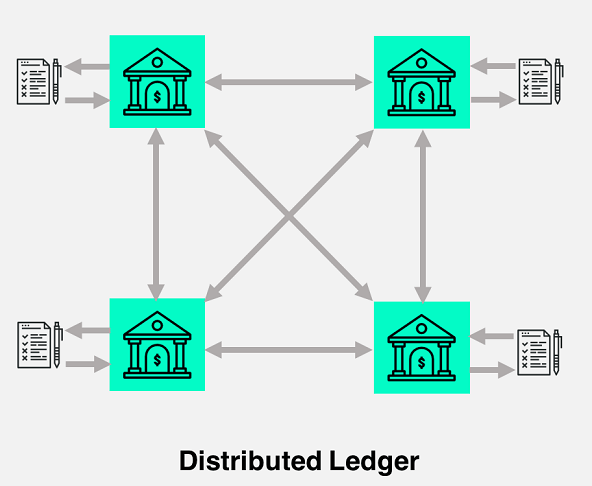

On the Internet, if there is no third-party organization, such as Tencent, Alibaba, Bank and other to provide verification information, we still can’t confirm each other’s identity, and can’t establish the trust relationship needed for economic exchanges between each other. The Internet has improved the efficiency of information exchange but also collected our data, which may cause some troubles for us. While the distributed ledger of the blockchain perfectly solves this problem.
DLT is a database that is shared, replicated, and synchronized among network members. It records transactions between network participants, such as the exchange of assets or data.
Participants in the network constrain and negotiate updates of the records in the ledger according to consensus principles. There is no involvement of intermediate third party arbitration institutions. Participants can get a copy of a unique, real ledger. Any changes in the ledger will be reflected in all copies, and the response time will be in a few minutes or even seconds.
Distributed ledger technology has the potential to help governments collect taxes, issue benefits, issue passports, register land ownership, ensure the operation of the supply chain, and ensure the integrity of government records and services as a whole. In the UK National Health Insurance System (NHS), this technology has the potential to improve the health care system by improving the delivery of validation services and by sharing records securely based on precise rules.
In addition, DLT’s application opportunities in the areas of payment, clearing and settlement are also considerable. Ripple is a good example for this. In March 2017, a consortium of 47 banks completed a Ripple Distributed Ledger Technology (DLT) trial, in which some participating banks officially put the technology into commercial use.
The advantages of distributed ledger technology
Distributed ledger technology can effectively improve the cost-effectiveness of the current infrastructure. The reasons for the high cost of current market infrastructure can be divided into three categories: Transaction costs, capital maintenance costs and insurance risk expenses. In some cases, especially where there is a high level of regulatory and mature market infrastructure, distributed ledger technology is more likely to form a new architecture than to completely replace the current one.
Nggak Nyangka! Hidup Gue Berubah Total! Gue bukan siapa-siapa. Cuma anak kos biasa yang kerja serabutan buat nutup biaya hidup… Read More
What is the Main Cause of a Heart Attack? What is its Solution? A heart attack is the blockage of… Read More
In the vast economic arena, one term that often takes center stage, inciting extensive debates and discussions, is the "debt… Read More
De-Dollarization: The Changing Face of Global Finance The financial landscape is in a state of flux, with an intriguing economic… Read More
The curtains closed on a dramatic Bundesliga season with Bayern Munich standing tall once again, clinching their 11th straight title.… Read More
The Unfolding Story of Celine Dion's Health In recent news that has left fans across the globe stunned, iconic singer… Read More